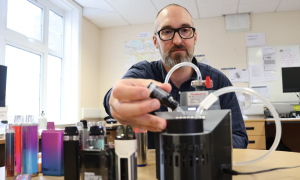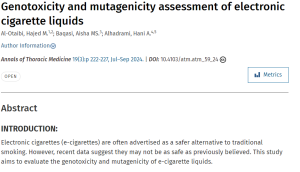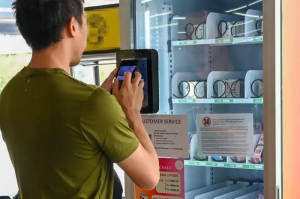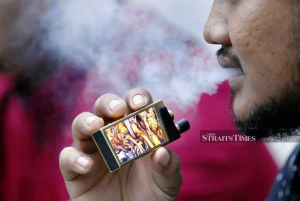HONOLULU — Recently diagnosed patients with e-cigarette- or vaping-associated lung injury, or EVALI, were younger and less critically ill than those from earlier in the epidemic, according to research presented at the CHEST Annual Meeting.
“EVALI is still a thing,” Denitza P. Blagev, MD, associate professor in the department of medicine at The University of Utah and chief medical officer at Riverton Hospital at Intermountain Health, told Healio. “We are still seeing patients with vaping-associated lung injury, and it remains important to stay alert to this fact as early recognition and treatment (stopping vaping, steroids for vitamin E acetate [VEA]-suspected EVALI) remain important.

“We should all remain concerned about the continued and growing popularity of vaping among children and young people coupled with the lack of convincing evidence for tobacco cessation for those who start vaping to quit,” Blagev added.
In a multicenter, prospective, observational study, Blagev and colleagues compared 101 patients diagnosed with EVALI between June 2019 and Feb. 2020 (early EVALI) to 179 patients diagnosed with EVALI between March 2020 and April 2022 (late EVALI) to find out if the COVID-19 pandemic confounded identification of EVALI or otherwise impacted patient characteristics and outcomes.
The average age of patients with early EVALI was 32 years, whereas those with late EVALI tended to be younger, with an average age of 28 years (P = .04).
“Finding [this] shift … in the late cohort was not expected and is somewhat surprising,” Blagev told Healio.
Compared with patients with early EVALI, fewer patients from the late EVALI group went to the ICU (26% vs. 52%; P < .001) and died (0% vs. 3%; P = .05).
Among those admitted to the ICU, more patients with late vs. early EVALI solely needed nasal cannula oxygen (50% vs. 35%; P = .02). Further, the average length of stay was 4.6 days in the late EVALI group, which was about a day less than the average length observed among patients with early EVALI (5.8 days; P = .03).
The researchers hypothesized that patients with EVALI may have presented earlier for treatment after the onset of symptoms during the COVID-19 pandemic “out of caution.”
“Our findings of overall milder EVALI course — lower rates of ICU admission, shorter length of stay, lower mortality, less severe hypoxemia (needing only oxygen nasal canula) — were consistent with what we were seeing anecdotally and might be attributable to earlier diagnosis of EVALI in the course of the disease and/or different etiology (not VEA which drove the 2019 outbreak) of EVALI in this late cohort,” Blagev told Healio.
Further evaluation of patients’ medical records revealed a higher prevalence of a history of anxiety among those with late vs. early EVALI (33% vs. 21%; P = .04), as well as a lower rate of pulmonary function testing (11% vs. 33%; P < .001).
Both groups had similar smoking histories, but researchers found more patients who tested positive for THC in the late vs. early EVALI group (88% vs. 71%; P = .02).
“We are trying to better understand these subsets of EVALI,” Blagev told Healio. “EVALI as an umbrella term includes a variety of causes (one of which is VEA) … and there may be an interplay between host (patient) factors and susceptibility as well as toxic agent factors (eg, VEA vs. other). Our next studies plan to look at whether patients who vape THC have different characteristics from those who vape nicotine only.”
Moreover, Blagev told Healio, working to prevent young individuals from vaping is just as important as research on EVALI.
“We are still at the infancy of understanding how to diagnose EVALI specifically (currently clinical diagnosis by history, and exclusion of alternative diagnoses),” she said. “While it remains important to better understand the long-term outcomes of patients with EVALI as well as improve understanding of how EVALI presentations evolve and improve bedside testing for specific diagnosis (eg, access to clinical and timely VEA testing, etc), we shouldn’t lose sight of the fact that at the end, the best way to treat and diagnose EVALI is to prevent it. We need to work toward not having young people start vaping in the first place.”
Source: healio










